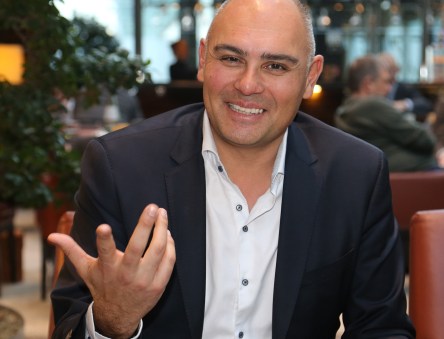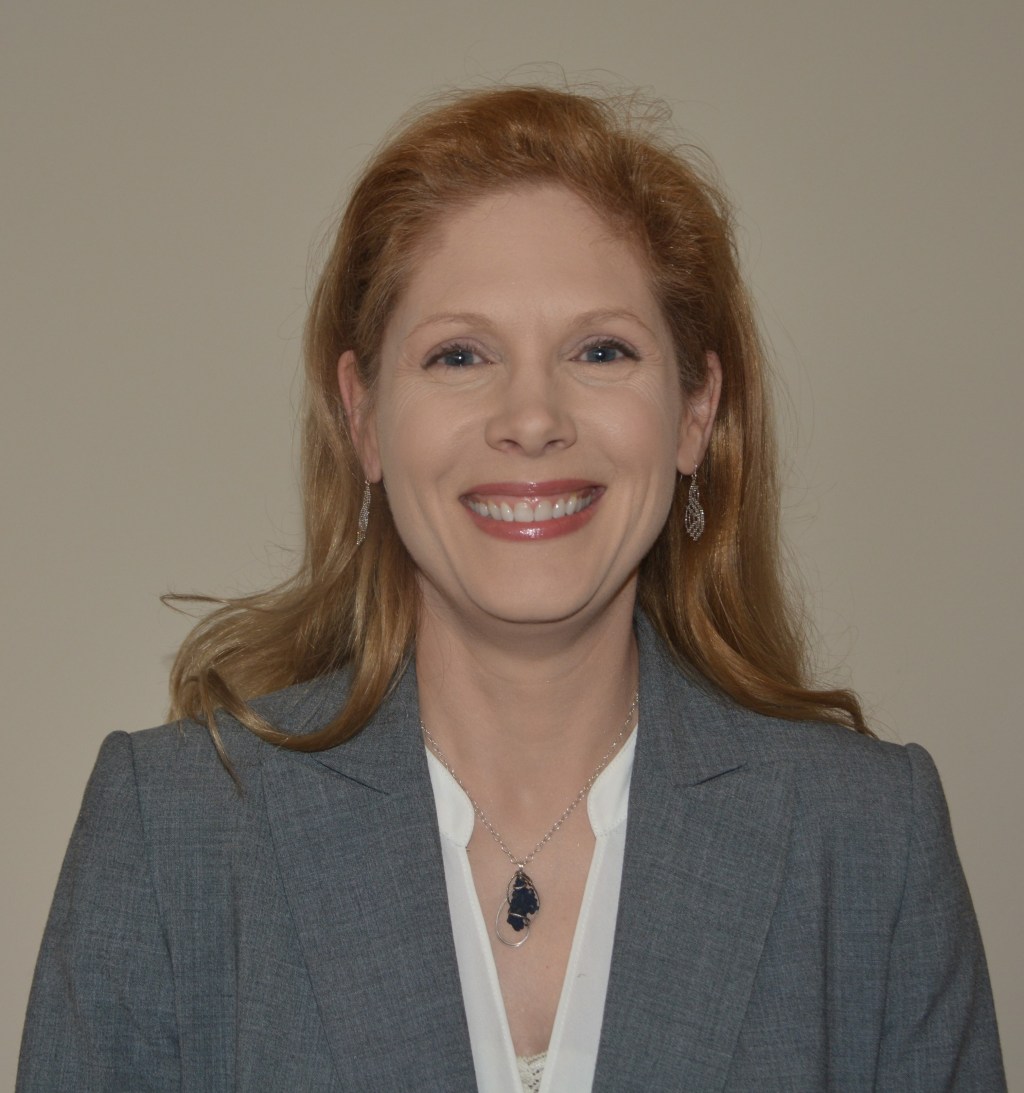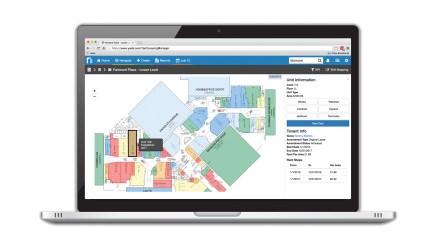Editor’s note: Richard Gerritsen is regional director for Yardi’s sales team, based in Amsterdam. The following piece appeared in Property Week and is reprinted here with permission. The tech giants of the world – the likes of Google, Facebook and Amazon – are putting all their efforts into gathering, analysing and monetising data about our everyday lives. I find it fascinating that so much of the data they use is generated inside a property, whether it Is the residential property where I live, the office where I work or the shopping centre where I shop. And yet we in the real estate industry are happy to sit back and observe these companies make money from that data, without questioning how we ourselves can better use it. We focus far too much attention on wondering whether data is relevant. This, I believe, is the wrong way of thinking. We need to capture as much data as possible in our properties – because providing we can learn to properly analyse that data, it will allow us to make infinitely better decisions about our portfolios. I understand why property companies are reluctant to embrace the power of data. After all, the essence of traditional real estate is based on the scarcity of information. If you’re a UK investor wanting to invest in Amsterdam, for example, you look for a local expert. If I’m that local expert, and I know something you don’t, you must pay me for it. I’m making money, and if I give you the right advice, you’re making money too. Everyone is happy and the model works. But when innovators come in and disrupt that model, and recognise my local knowledge is just data that could be in a database, we risk being overtaken....
Energy Boom
Insight from Yardi's Christy Cannon
Christy Cannon, a Yardi Energy account executive and holder of the Certified Energy Manager designation from the Association of Energy Engineers, discusses how integrated systems are streamlining building operations. The exchange below includes excerpts from an interview published in Commercial Property Executive. Q: How do building managers perceive the network of physical objects that can sense, communicate and interact with the external environment, otherwise known as the Internet of Things (IoT)? A: The principal appeal is the opportunity to reduce operating costs, increase NOI and ultimately increase property value for the building owner. Our retail clients also face pressure to provide space that helps their tenants cultivate an image of environmental stewardship. I see people who do the heavy lifting every day being excited about IoT. It’s like giving them a superhero cape. IoT devices help facility managers perform predictive maintenance and optimize heating, ventilation and air conditioning (HVAC), which not only reduces the number of comfort calls they have to deal with but also lowers repair and maintenance costs and extends the life of expensive equipment. Energy managers can view utility consumption in real time. They can manage peak electric demand and save 20% or more off their unregulated utility bills, or immediately identify a water leak. Q: What’s the relationship between the IoT and artificial intelligence (AI)? A: The IoT architecture looks something like a wheel with hundreds or thousands of spokes, with each spoke representing an IoT device. Multiple network structures enable IoT devices to get their data to software that can use it. AI takes all the big data buildings collect from IoT devices, building automation systems and submeters, and learns how to predict future outcomes or make decisions based on the best available options. Consider all the factors that contribute to a building’s...
Coworking Takes Off
Asia market update
The global wholesale leasing model is under pressure, as technology-enabled coworking gains both momentum and market share, says Neal Gemassmer, vice president of international sales for Yardi. Shared workspace is not new – but advancing technology, the growing gig economy and cost-cutting strategies are driving the coworking trend into the mainstream. Increasingly, corporations are turning to coworking to accommodate remote employees, attract talent, promote work satisfaction and reduce leasing costs. “Technology-enabled coworking is undoubtedly putting pressure on traditional leasing models,” Gemassmer says. “Developers of A Grade office buildings have traditionally acted as wholesalers of whole or half floors of space to occupiers who must make long-term leasing commitments, and then fit out their own offices. “But technology-enabled coworking operators are using online marketing and leasing systems to efficiently offer office space to tenants at competitive rates. This is beginning to encroach on the territory of office developers. “Changes to technology does more than change behaviour. It changes the environment itself.” Gemassmer points to a recent report from Asian market intelligence source Mingtiandi, developed in partnership with Yardi, which found the growth rate of coworking in Asia had hit 40 percent in 2017. Starting as a single coworking space in New York in 2010, WeWork is one lease away from being the biggest landlord in the Big Apple. With 280-plus locations in 20 countries, WeWork is rolling out roughly 185,000 sqm of new office space every month. Around a quarter of WeWork’s clients are enterprises with more than 1,000 employees. WeWork only launched the enterprise service in 2016, and has since amassed an impressive list of clients including Facebook, Airbnb, Microsoft, Adidas, Amazon, Starbucks and LinkedIn. WeWork is just one of several coworking companies taking the region by storm, but it is the biggest. In...
Reimagining Investment...
Asia market insight
Editor’s note: The following post was written for real estate and investment professionals in Asia by Bernie Devine, Regional Director (Asia) for Yardi. With 30+ years’ experience dedicated to real estate and technology, Bernie is a leader in digital transformation in real estate and using data to create a more competitive and collaborative environment. He supports real estate clients with Retail, Commercial, Industrial, Residential and Mixed Use assets, helping them to grow their operations, create efficiencies, and gain better insight into their business. His expertise includes asset and investment management, private equity, operations improvement, program and project management, finance, technology implementation and compliance. Currently responsible for the growth of Yardi Systems in Asia, Bernie lives in Hong Kong and is a qualified accountant and economist. He has published over 60 articles and has extensive public speaking experience. I’ve recently seen a lot of discussion around the tokenisation of real estate investments. Some has been sensible, but some has missed a few key points. Two key challenges of the real estate market for the last 400 years when compared to other investment asset classes are the slow pace of transactions (it takes a long time for ownership to be transferred) and liquidity (the purchase price is so large that only a limited market of buyers exists). There have been many innovations over the years (Such as private equity funds and REITS) that have sought to address these issues, but the proptech community now thinks it may have a better solution. Tokenisation of real estate investments is about changing the way ownership of an asset is represented. It’s proposed that this change in ownership model will open up how the purchase of the asset is funded and how ownership is transferred. Basically, if ownership can be...
Asset Tech Upgrades
Insight from Todd Huebsch
Until fairly recently, enterprise software platforms for real estate largely focused on accounting, finance and other back office operations. The advanced programming languages, mobile reach and internet capacity that enable automated workflows and remote access available for the back office hadn’t reached the front office. Things are different today—for the better. In an article originally published in Journal of Property Management, Todd Huebsch, Yardi vice president of commercial sales, explains why. New software applications squarely target the front office, lending new dynamism to leasing, customer services, facility management, development and other operations. What does the evolution of technology dedicated to the front office mean in practical terms? For one, it means that property management technology has reached the point where remote access is both affordable and effective for managers involved in leasing, construction and facilities management. It also means leasing and asset management can work a deal together with a previously unattainable degree of collaboration. Development vice presidents can evaluate risk with instant access to project status, instead of waiting for a weekly report. They can leverage ERP data such as lease comps, revenue trends, contractor and job analysis, to make better decisions. Consider, for example, construction managers working to correct a problem with a building’s foundation. In an earlier era, they would call or email the back office, or even leave the site altogether to calculate the change order and negotiate the amount and cost code. Today, using apps designed specifically for their role, construction managers can enter the work order with just a few taps on a mobile device. The change order automatically flows to the back office and is recorded in the core property management and accounting platform. The adjustment is fully visible to all parties and the construction manager...
Realcomm Recap
Huebsch, Teel talk trends
Yardi’s Rob Teel, senior vice president of global solutions, and Todd Huebsch, vice president of commercial sales, discussed key trends in the commercial real estate industry in interviews at the recent Realcomm and IBCon conferences. Excerpts follow. Q: What are some key shifts that you’re seeing in commercial property management? Huebsch: From an enterprise platform standpoint, software products historically have been developed for people in back office operations such as accounting and property management. Now we see the emphasis rapidly changing to the front office—people in the field who are managing leases, construction projects and facilities. Enabling that move is a series of mobile apps and role-based tools that simplify tasks and help front office people do their jobs faster, easier and more efficiently while seamlessly connecting to the back office. These new capabilities speak to reducing risk and increasing asset value Q: What is Yardi’s primary focus area at present? Teel: There are three. One is Yardi Elevate, which, in contrast to the traditional chief financial officer focus of property management software, is tailored to a chief operating officer whose direct reports might include the leaders of leasing, asset management, construction and facilities management. Another key focus is energy management, which addresses the needs of COOs and chief engineers who are looking to reduce consumption and expenditures and boost sustainability. Yardi has made five acquisitions in three years in this area and it’s one of our leading long-term strategic visions. And coworking has gone through a revolution in the last two years. Today about 1% of commercial offices in the U.S. are tagged as coworking space but we think it might go to 5-10% in the U.S. and globally within a few years. We made two acquisitions that brought us the Yardi KUBE...
Building Dimensions
Visual Leasing Technology
Leasing agents often have to be part lawyer, part CPA and part tour guide when handling such details as monitoring existing tenant lease options, notifications and expiration dates, tracking prospective tenants, crafting letters of intent and arranging showings. Customer relationship management technology that manages these operations has come a long way over the past few years. A key development was stacking plans and floor plans that provide a two-dimensional visual representation of a building showing space availability, tenants on each floor, expiration dates and current rental rates. Color coding helps managers, leasing teams and others identify opportunities and expose risk. And mobile technology has taken lease execution out of the office and into the field, further shortening the leasing cycle. What’s the next step for CRM technology? The Balance Sheet asked Tom Dragmen, Yardi’s manager of global solutions, for a deeper dive into the emerging generation of stacking plan and floor plan technology. Q: What does “interactive stacking and floor plans” mean? A: This refers to a rich visual representation of lease expirations and related space details. They can overlay configurable performance measures and metrics on floor plans. They also provide a visual dimension for efficiently analyzing expirations, options, unit types and rent-per-area trends in buildings. Q: What’s the user perspective? A: Leasing agents and others get a full graphical display of vital information including lease statistics that determine rental rate trends. They can see stacking and floor plans based on expirations occurring in specific years, rents per area, encumbrances, options, proposals, unit types, and tenant performance measures such as sales per area, sales variances year over year and foot traffic. Q: How can this information be used? A: When integrated with CRM and accounting systems, the new generation of interactive stacking and floor...
Tech Evolution
New Truths for CRE
Alex Stanton, Yardi industry principal for Commercial, joined other technology experts in exploring the fast-paced evolution of technology, automation and innovation in a recent Realcomm-sponsored webinar. The six-member panel described the current real estate technology paradigm that considers tenants, guests, employees and shoppers as interrelated elements of a user experience. As a result, property owners and managers aim to deliver a high-value experience by using new property management software systems that can capture and apply data inclusive of all occupant touchpoints, from reservations to parking to the building environment. Stanton elaborated on this theme, noting the convergence of historically separated property management technologies for property and facilities maintenance, energy management, procurement and self-service experiences. Amid rising expectations of among space and asset users, he said, “facility, property and business management systems are coming together,” allowing inventory management, preventative maintenance and exceptions management from a core suite. Additional technology innovations include “interfaces that enable experiences, such as service requests, photo-enabled technology for notifications, concierge services and payments, with immediate download of supporting photographs,” he said, adding, “Yardi sees tremendous opportunity in artificial intelligence, the internet of things and visualization.” Addressing another part of creating an optimal building experience, Stanton referenced Yardi’s creation of an energy suite that encompasses everything from energy optimization, sourcing, utility expense management and compliance. Other speakers addressed other drivers of real estate technology innovation. Rick Gehringer from real estate developer Caruso related how a common technology platform can provide “a true experience management system” for guests by capturing all touchpoints and every user engagement across a property. Examples of how technology can make the guest experience enjoyable, efficient and high-quality include a common reservation system, a rewards system that captures receipt images and an automated parking system. John Gilbert of commercial...
No Lead Left Untracked...
Brian Maguire, Industry Principal
With a wealth of experience in the apartment advertising industry, Lead Tracking Solutions wanted clients to be able to know exactly which of their ad campaigns had generated leads, prospects and phone calls – without a margin of human error. Paper guest cards, hand-entered into a database, were just too antiquated and unreliable. The result is what’s now known as the Yardi PopCard, an automated guest card that automatically populates when a prospect contacts a property. Yardi PopCard is fully integrated with Yardi Voyager, meaning leads and follow-up opportunities can’t be lost and automatically appear in Voyager once received. Yardi acquired Costa Mesa, Calif. based Lead Tracking Solutions in April 2012. In addition to having a very cool name, the PopCard gives multifamily firms more control over the lead management process, and LTS’ support staff helps clients maximize their advertising budget in an effective way. “With lead management we can go back to clients with reports, and whether per ad campaign or employee performance or region or we’re going to give you all the tools and management capabilities to say ‘cancel, upsize, downsize,’ your efforts,” co-founder Brian Maguire explained. LTS also offers the tools to track follow-ups by leasing agents, so you can view how many inquiries they are receiving from prospects and how quickly they’ve responded to prospects via email. “Many of our clients say: ‘I wish I had this information before. It’s simple if you think about it, but nobody’s ever done it before. Now I know exactly what’s going on at my sites without having to be there,’” Maguire said. LTS’ audit and success team helps clients interpret the results and make good business decisions based on the information collected. Major multifamily firms using Yardi PopCard include Riverstone Residential Group, Pinnacle,...
Affordable and Public Housing News...
Insight from Mark Livanec
Mark Livanec, Vice President of Affordable Housing and PHA Sales at Yardi Systems, is an active advocate for Yardi clients when it comes to state and federal legislation affecting affordable and public housing. Mark serves as secretary of the Board of Directors of the National Affordable Housing Management’s Educational Foundation, which raises scholarship funds for residents in affordable housing developments; he is also a member of the NAA’s Affordable Housing Task Force. Mark was recently in Washington, D.C. to participate in NAHMA’s winter meeting and the NAA Capitol Conference. We asked him to brief us on the latest developments Federal budget – Widespread concern about funding There’s substantial concern about the 2013 federal budget, especially the fact that it has not authorized all affordable housing and public housing programs. SEVRA – the Section Eight Voucher Reform Act – that’s been in place for the last year – is looking at the way housing choice vouchers are being budgeted and reported on. It really has got a many people concerned, especially in the public housing sector as well affordable housing owner-agents, those organizations who are using the housing choice voucher dollars to help pay for resident rent. We are concerned those programs will be cut dramatically. The 2013 budget isn’t even authorizing all of the funds being requested. It’s expected to authorize funds covering only a partial year. There’s a lot of concern about ‘are owners going to be paid on time for voucher payments?’, and ‘are Housing Authorities going to see cuts in the funding and the availability to deliver vouchers?’ Everybody is concerned on the owner-agent side that they will to be able to meet their deliverables. Technology – HUD TRACS 202D update postponed HUD has been working on the TRACS 202D update. ...
Trends in Investment Management
Rob Teel Talks Commercial Real Estate
We talked to Rob Teel, Vice President, Yardi Global Solutions, about his thoughts on current trends in investment management, specifically commercial real estate portfolios. What’s hot? As a result of the global financial crisis, investors and portfolio managers are taking a heightened interest in three things: Cycle time, transparency, and risk analysis, before and after committing large amounts of capital to investment managers. Let’s break it down. Cycle time – The time between the end of the quarter and the production of investors’ returns and reports is crunch time. Shortening that cycle from weeks to days is a crucial component of keeping investors happy. Banks and investors are now asking for more frequent valuations of real property, which can be costly and time-consuming. Investors are also looking for forecasts, so they can anticipate the value of their investment in the years ahead. Yardi VMF creates full portfolio valuations, in an automated, accurate and repeatable way, quarter after quarter, or any frequency desired. Transparency – Investors and investment boards now want a heightened level of detail about how their commercial investment properties are doing, down to the level of tenant health. They aren’t satisfied with the pretty pictures of the assets traditionally included in quarterly reports, and want to drill down to find outstanding receivables and other property-specific information. Yardi Investor Portal provides a technology tool for frequently-published, data rich reports. Risk analysis – Successful investment management means monitoring a portfolio closely for potential trouble spots. Portfolio managers can choose the attributes they’ll monitor to keep close tabs on portfolio assets. Producing the best possible business intelligence platform for risk management is one of the goals of Yardi Orion, which uses Microsoft Sharepoint built on an OLAP data cube to give instant access to investment data. Wait, I can’t use Excel to manage my clients’ portfolios? In a word, no. Investors and institutional investment management boards – which oversee multi-million dollar funds on behalf of private individuals and trusts, retirement systems, and other investment entities, are asking for more intelligent business software solutions to ensure that their investments are monitored wisely. Investment managers need to account for accounting controls, risk controls, operational controls with a smart technology choice. You will not get institutional funding if you are running on an Excel spreadsheet. What’s next? The investment management industry should be focused on automating all aspects of the real estate life cycle, from end to end. That should include property operations, acquisitions, dispositions, monitoring, and risk analysis. All of the processes that are required can be automated, from the time you acquire that asset and attract new investors that help you acquire it, to the time you’re monitoring it, looking for outliers and patching up the health of your portfolio, to the time you need to dispose of it, get the right value for it and close it out....











